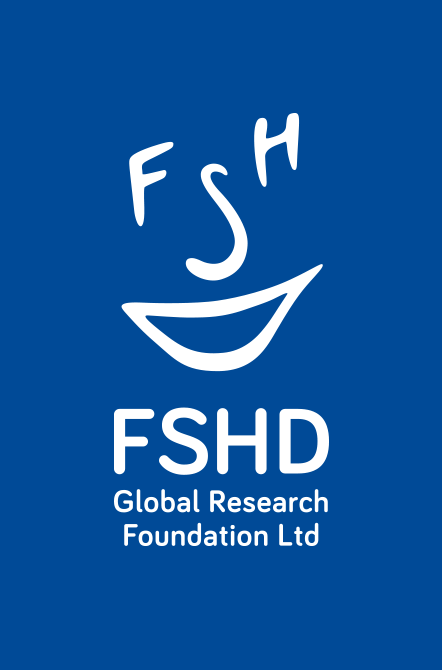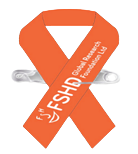GRANT 26
Research Institution: University of Massachusetts Medical School
Principle Investigator: Professor Rossella Tupler
Type: International
Project title: “Functional study of a novel candidate gene for FSH (LRIF)”
Status: Active
Summary
We have recently discovered a novel autosomal recessive form of FSHD, FSHD3, in an Italian family with only two affected sisters born from healthy parents. In autosomal recessive diseases one individual must carry two mutated copies of the same gene to have the FSHD. The genetic defect we found in FSHD3 abolishes a specific function of a protein and correlates with a very severe form of FSHD similar to that observed in rare sporadic cases.The protein we discovered in FSHD3 cooperates with SMCHD1. This is very important because the deficiency of SMCHD1 protein causes FSHD2, a sporadic form of FSHD associated with a mild disease. Interestingly FSHD3 and FSHD2 are clinically very different: FSHD3 display a very severe clinical FSHD, whereas a mild form of disease characterizes FSHD2 patients.
Thus, for the first time, we identify genetic elements that can dissect FSHD pathogenic mechanisms. From a molecular point of view, both proteins participate to the control of the activity of several genes located in various chromosomes, not only on chromosome 4q35, where the FSHD defect resides. It is therefore possible that the mutations in the FSHD3 gene can cause the very severe FSHD3 observed in the two sisters because its deficiency alters the activity of many genes contributing to muscle development and function. On the other hand, SMCHD1 deficiency might influence the activity of fewer genes and cause a milder disease, as observed in FSHD2 cases in comparison with FSHD3.
Overall, our discovery suggests that the basis of the large clinical variability observed in FSHD might lie on the number and type of genes that have an anomalous activity.
To study the effect of the FSHD3 mutation in muscle we have generated a mouse model carrying the mutation in the FSHD3 gene we found in the affected sisters from this new family (Specific Aim 1). We have generated cells with the ability of becoming various types of cells from cells donated by the two FSHD3 sisters and two healthy sibs. These cells are named iPSCs (induced Pluripotent Stem Cells) and we are now in the position of generating skeletal muscle cells in collaboration with Genea Biocells (Specific Aim 2). We have also started identifying genes that are anomalously expressed in muscle cells lacking the FSHD3 protein or SMCHD1 (Specific Aim 3).Our future work will be focused on the identification of the most important ways we should work on to impede the disease appearance and/or progression.
PROGRESS REPORTS
Update February 2017
FSHD is considered an autosomal dominant disease associated with changes of DNA or chromatin of a region located at the very end of the long arm of chromosome 4. Studying FSHD for over 25 years we understood that FSHD does not always present as an autosomal dominant trait with affected people in all generations of a family tree. Instead we found families in which two sibs have FSHD with healthy parents and healthy children. This type of setting is suggestive of an autosomal recessive mode of inheritance. In this case genetic counseling is different because parent and children are carriers of only one mutated gene and have no risk of developing disease. Moreover the study of these families can bring more knowledge to understand FSHD. With these considerations in mind we studied a family in which FSHD seemed to be transmitted as autosomal recessive disease. The two sisters with FSHD presented a rapid progression and very severe outcome. Both sisters presented severe reduction of muscle mass and respiratory difficulties. We found they carry homozygous mutations in one gene encoding a protein that might play a role in chromatin conformation. We demonstrated that the two identical mutations present on both copies of this gene causes the lack of one of the two forms of the protein that the cell can produce. We think that the absence of this specific form can trigger a cascade effect and interfere on the function of several genes with severe consequences for the muscle.
Our studies may facilitate the understanding of the complex mechanisms underlying FSHD and have important repercussions for clinical practice, genetic counseling and research in this disease.
Update July 2017
FSHD is considered an autosomal dominant disease associated with changes of DNA or chromatin of a region located at the very end of the long arm of chromosome 4. Studying FSHD for over 25 years we understood that FSHD does not always present as an autosomal dominant trait with affected people in all generations of a family tree. Instead we found families in which two sibs have FSHD with healthy parents and healthy children. This type of setting is suggestive of an autosomal recessive mode of inheritance. In this case genetic counselling is different because parent and children are carriers of only one mutated gene and have no risk of developing disease. Moreover, the study of these families can bring more knowledge to understand FSHD. With these considerations in mind we studied a family in which FSHD seemed to be transmitted as autosomal recessive disease. The two sisters with FSHD presented a rapid progression and very severe outcome. Both sisters presented severe reduction of muscle mass and respiratory difficulties. We found they carry homozygous mutations in one gene encoding a protein that might play a role in chromatin conformation. We demonstrated that the two identical mutations present on both copies of this gene causes the lack of one of the two forms of the protein that the cell can produce. We think that the absence of this specific form can trigger a cascade effect and interfere on the function of several genes with severe consequences for the muscle.
Our studies may facilitate the understanding of the complex mechanisms underlying FSHD and have important repercussions for clinical practice, genetic counselling and research in this disease.




